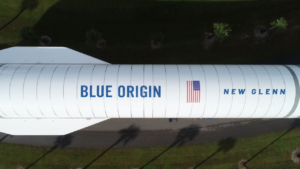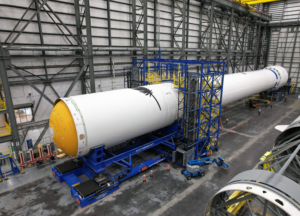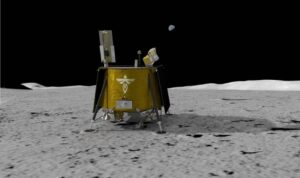
What Happened To Boeing’s Starliner Spacecraft?
It has been quite a long time since we heard anything regarding Boeing’s Starliner spacecraft. Last year the vehicle was just weeks away from its first human mission and then a number of problems derailed the company’s plan and schedule.
Now in 2024, we are learning more about Boeing’s recent tests, and the possibility of a launch in the coming months. Unfortunately, these delays have also come at a cost to the company and not just in the form of lost opportunities over the past few years.
Pretty consistently since 2016, the company has been charged hundreds of millions almost every year totaling around $1.5 billion. These overrun costs among other factors are putting extra pressure on the company to get this vehicle off the ground and fully certify it for human missions. Here I will go more in-depth into its current schedule, what needs to be worked on, the first human mission, and more.
Starliner’s Schedule

At the beginning of last year, updates on Starliner were quite frequent with a launch just months away. Nearly every few weeks we would hear more about the first crewed launch, the crew itself, vehicle readiness, etc. That was up until around the middle of the year when the updates slowed down. Looking at Boeing’s website and specifically the Starliner mission update page, the last report was published on July 31st, over 5 months ago.
In this report, they mentioned a teleconference that would be held on August 7th with the manager of NASA’s Commercial Crew Program and the vice president and program manager of the CST-100 Starliner. During that briefing, Mark Nappi, vice president and program manager of the CST-100 Starliner at Boeing, mentioned that the hardware could be ready by March. On the other hand, he clarified in a quote saying, “That does not mean we have a launch date in early March, that means that we are ready with the spacecraft then, and we’re now working with the NASA Commercial Crew program, ISS, and ULA on potential launch dates based on our readiness,”
A few months later in October, they announced that a launch in April would be viable based on crew rotations, vehicle readiness, and accommodating cargo resupply plans. Earlier in the year, Boeing had discovered two major problems with the spacecraft. One was a type of tape used throughout the inside of the vehicle that turned out to be flammable. The other issue had to do with soft links in the parachutes. Specifically, they didn’t meet the safety margin necessary for the mission.
By October Boeing had completed P213 tape removal in the upper dome of the Starliner crew compartment and had moved on to removing tape in the lower dome of the spacecraft. At the time they said in a quote, “These hardware remediation efforts inside the Starliner production facility at NASA Kennedy are expected to be completed during the next several weeks. After the P213 tape remediation efforts conclude, engineers will conduct final assessments to ensure acceptable risk of any remaining tape” they said. While we haven’t received any official updates on this process yet, with it being months since this update, we can assume the tape issue is practically done if not complete.
Regarding the parachutes, NASA and Boeing just complete a new test only days ago. In this case, a modified parachute system for Boeing’s Starliner spacecraft was tested over the Arizona desert on Jan. 9. During the test, the parachute deployed and the vehicle completed a soft landing soon after. NASA was quoted saying, “Preliminary data analysis of this two-parachute test suggest the primary test objectives were met. Engineering teams will continue to review the results, inspect the test parachutes, and work to complete system certification in the weeks ahead. They also confirmed that the crewed launch would happen no earlier than mid-April.
The test, which used a Starliner parachute system attached to a dart-shaped sled the same weight as a Starliner, was performed to confirm the functioning of a redesigned and strengthened soft link joint that is part of the network of lines connecting the parachutes to the spacecraft. The test also validated a change to strengthen one textile joint in the parachute, increasing overall parachute robustness. As with other capsules, Starliner relies on parachutes to land safely when it returns to Earth. With this now complete, a launch in a few months from now is becoming much more likely.
A Rough History

While a successful crewed launch by April would be great for Starliner and Boeing, it would only be a start in attempting to make this program both profitable and successful as a whole. As partially mentioned before, the company’s Starliner program overrun costs have totaled to over $1.5 billion as delays continue. These charges go all the way back to 2016, around when consistent problems started to arise with the vehicle.
In addition to these extra costs, Starliner has missed out on massive contracts with NASA that have instead gone to SpaceX. For example, back in August of last year, around the same time as Boeing announced delays to March of next year, SpaceX won a big contract. Specifically, at the time, NASA awarded five additional missions to SpaceX for crew transportation services to the International Space Station as part of the agency’s Commercial Crew Transportation Capability contract. The contract modification brought the total missions for SpaceX to 14.
In a statement, they said, “This is a firm fixed-price, indefinite-delivery/indefinite-quantity contract modification for the Crew-10, Crew-11, Crew-12, Crew-13, and Crew-14 flights. The value of this modification for all five missions and related mission services is $1,436,438,446.
In reality, the first crewed Starliner mission was supposed to happen in 2017. That helps put in perspective the amount of problems and issues that have come up in this vehicle’s history. While the recent tape and soft link problem are not ideal, the real setback was the result of Starliner’s first and partially second uncrewed test flight.
The first uncrewed orbital flight test launched on December 20, 2019, but after deployment, an 11-hour offset in the mission clock of Starliner caused the spacecraft to compute that “it was in an orbital insertion burn”, when it was not. This caused the attitude control thrusters to consume more fuel than planned, precluding a docking with the International Space Station. To make matters worse, after the mission NASA stated that two software errors detected during the test, one of which prevented a planned docking with the International Space Station, could each have led to the destruction of the spacecraft, had they not been caught and corrected in time. Before re-entry, engineers discovered the second critical software error that affected the thruster firings needed to safely jettison the Starliner’s service module. The service module software error “incorrectly translated” the jettison thruster firing sequence.
Soon after the mission was complete, NASA and Boeing began a significant investigation to figure out exactly what went wrong and ensure it never happened again. By December 2019, they had completed this review. The review team identified 80 recommendations, including 21 suggesting the need for greater hardware and software integration testing; performance of an end-to-end “run for record” test prior to each flight using the maximum amount of flight hardware available; reviewing subsystem behaviors and limitations; and addressing any identified simulation or emulation gaps.
After this initial test flight and review process, a few years went by as Starliner prepared for its second uncrewed test flight. Despite all of the recommendations and the thorough review, the next launch attempt would still feature quite a few problems. During the August 2021 launch window, some issues were detected with 13 propulsion-system valves in the spacecraft prior to launch. The spacecraft had already been mated to its launch rocket, United Launch Alliance’s (ULA) Atlas V, and taken to the launchpad.
Attempts to fix the problem while on the launchpad failed, and the rocket was returned to the ULA’s VIF (Vertical Integration Facility). Attempts to fix the problem at the VIF also failed, and Boeing decided to return the spacecraft to the factory, thus cancelling the launch at that launch window. The valves had been corroded by intrusion of moisture, which interacted with the propellant, but the source of the moisture was not apparent. By late September 2021, Boeing had not determined the root cause of the problem, and the flight was delayed indefinitely. Through October 2021, NASA and Boeing continued to make progress and were “working toward launch opportunities in the first half of 2022”, In December 2021, Boeing decided to replace the entire service module and anticipated OFT-2 to occur in May 2022.
The OFT-2 mission finally launched on May 19, 2022. Two Orbital Maneuvering and Attitude Control System (OMACS) thrusters failed during the orbital insertion burn, but the spacecraft was able to compensate using the remaining OMACS thrusters with the addition of the Reaction Control System (RCS) thrusters. A couple of RCS thrusters used to maneuver Starliner also failed during docking due to low chamber pressure. Some thermal systems used to cool the spacecraft showed extra cold temperatures, requiring engineers to manage it during the docking. On May 22, the capsule docked with the International Space Station. On May 25, the capsule returned from space and landed successfully.
Conclusion
Boeing has just about finished working on the flammable tape and soft links issue. The recent parachute test is a good sign and means a launch within the next couple of months could happen. We will have to wait and see how it progresses and the impact it has on the space industry.



